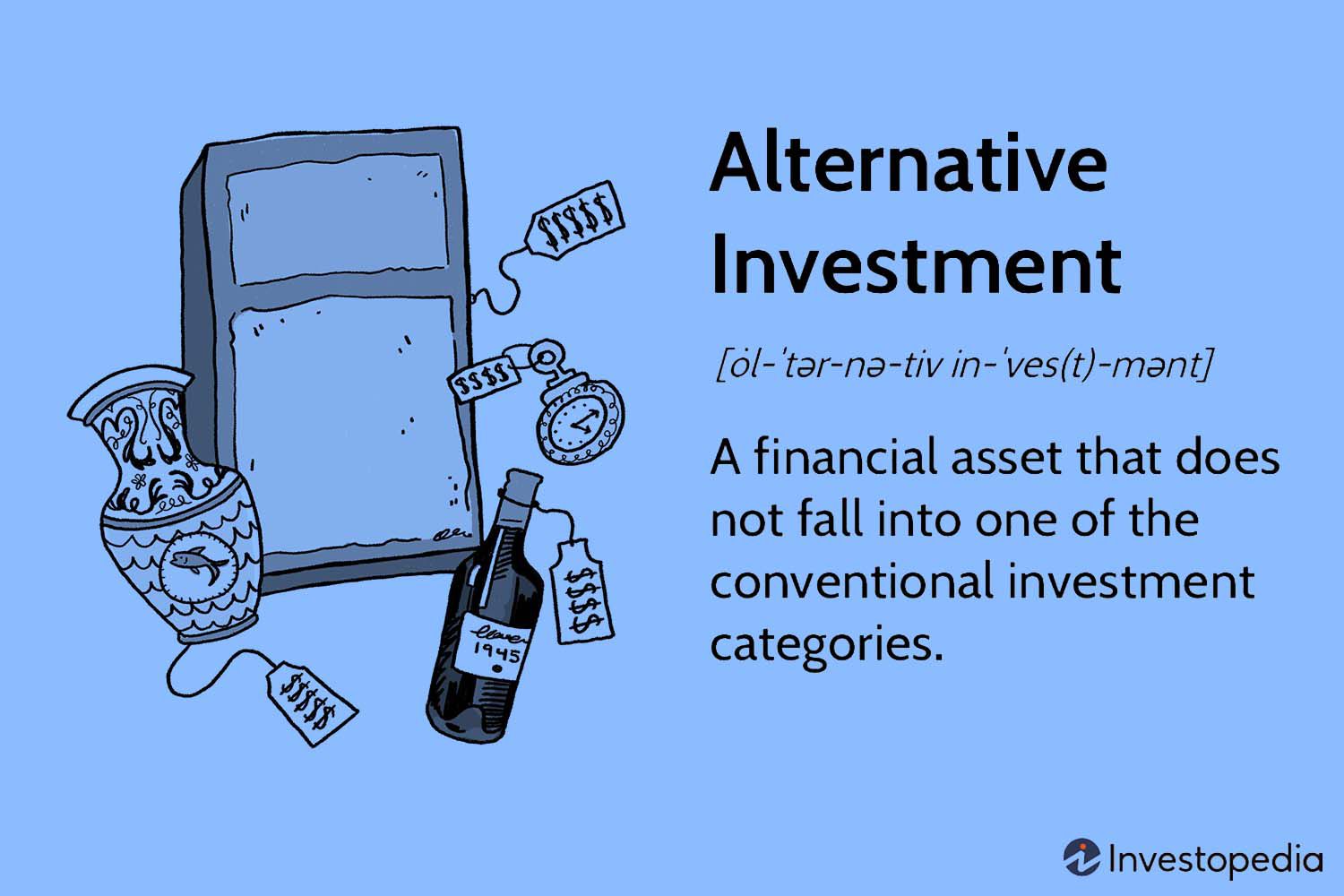Alternative Investment Solutions To Make Your Money Work
Art And Digital Art 
If you’re someone with a flair for the arts or an avid art collector at heart, diving into the world of art and digital art as alternative investment solutions could be a thrilling venture for you.
The art world is witnessing a dynamic fusion of traditional art forms with cutting-edge technologies, offering unique investment opportunities, especially in the realms of up-and-coming and emerging artists.
Let’s explore some examples and trends that are making waves in this sector.
Immersive Technologies and Blockchain in Art
The art market is being transformed by immersive technologies, allowing for multi-sensory experiences that extend the interaction between artists and viewers beyond traditional spaces. For example, virtual reality (VR) is being used to create fully immersive virtual exhibitions, enabling art lovers to explore their favorite artworks from the comfort of their homes.
This not only makes art more accessible but also opens up new revenue streams for artists and museums by capturing new audiences.
Blockchain technology is another game-changer, enhancing the authenticity and provenance verification of artworks.
By converting artworks into Non-Fungible Tokens (NFTs), blockchain protects intellectual property and facilitates secure transactions, thus attracting a new generation of art collectors and investors.
This technology is empowering artists and collectors to easily and transparently monetize their creations.
AI and Mobile Apps in Art
Artificial Intelligence (AI) simplifies production processes and enables new forms of creativity. Generative AI, for instance, can mimic traditional painting styles or even create entirely new ones, pushing the boundaries of artificial creativity. This democratizes art production, allowing more individuals to engage in the creative process and produce art in various forms.
The expansion of mobile connectivity and the advent of 5G is making smartphone-optimized artworks more prevalent, further shifting art experiences to mobile platforms. This trend is making art more accessible and interactive, offering new ways for artists to connect with their audience.
Online Sales and Economic Factors
Despite the resurgence of in-person art events post-pandemic, online sales remain a vital gallery revenue stream.
Combining in-person relationship-building with online sales, this hybrid model is becoming increasingly important in art. The digital space offers a platform for galleries to reach new collectors and engage with a broader audience.
Inflation and global economic uncertainties are also influencing the art market, leading to adjustments in artwork pricing. This economic environment, coupled with the growing interest in mid-career and ultra-contemporary artists, shapes investment strategies within the art industry.
As you venture into the art and digital art investment space, keeping an eye on these trends and leveraging emerging technologies can provide exciting opportunities to grow your investment portfolio while supporting the arts.
Whether it’s through immersive art experiences, blockchain-secured artworks, or AI-driven creations, the art world offers a rich tapestry of investment opportunities for those looking to diversify beyond traditional markets.
Gold Coins
If you are knowledgeable about gold and vintage coins, you can make a stellar investment by purchasing a krugerrand gold coin.
Wine 
Rental Properties
Rental properties offer a compelling way to diversify investment portfolios, with a low correlation to stock market fluctuations, providing stability during economic downturns. Platforms like Airbnb have revolutionized the rental market, enabling investors to generate substantial returns from smaller properties, not just large apartment blocks.
This trend toward the sharing economy has opened up new opportunities for investors to capitalize on short-term rentals, expanding the potential for income generation in the real estate sector.
Exploring ideas like leveraging technology for property management and utilizing data analytics for market insights can enhance rental property investments. Trends show a shift towards sustainable and smart homes, attracting a new generation of tenants.
Leaders in the field are adopting innovative platforms for property listing and management, such as Zillow and Cozy, which streamline operations and enhance tenant experiences. These advancements are shaping the future of rental property investments, making them more accessible and profitable and great alternative investment solutions.
Peer-To-Peer Lending
Sports Memorabilia 
Investing in sports memorabilia, such as sports cards, can be lucrative, especially for avid sports enthusiasts with knowledge about specific sports or teams. The sale of a 1952 Mickey Mantle baseball card for $12.6 million in August 2022 underscores the potential high value of such investments.
This field has grown significantly, with platforms like Collectable and PWCC providing valuable data and market insights. The trend towards fractional ownership is also making high-value items more accessible to a broader audience.
Rare Books And Manuscripts
If you are an avid reader with a background in historical books, manuscripts, and archives, you may consider the benefits of investing in rare books. This may seem like an obscure path to take, but you would just be following a winning example. In 2020, amidst the economic crisis triggered by the Covid-19 pandemic, investors turned to rare books – and for a reason!
Alternative Investment Solutions: Speak To an Expert Advisor
Diving into the world of alternative investments can truly transform the way your money works for you. It’s a bit like embarking on a culinary adventure; just as you might consult a seasoned chef or a friend who’s a foodie before trying out a new exotic dish, it’s wise to chat with an expert advisor when navigating these less traditional investment paths. Their insights can help you tailor your investment choices to your personal financial landscape, much like how a sommelier pairs the perfect wine with your meal.
If you’re wondering where to start this conversation, you’re not alone. Many find their way through personal finance forums, social media groups dedicated to investing, or even local meetups where people share their investment stories and lessons learned. It’s not just about getting advice but also about sharing experiences and growing together.
And when it comes to learning, the world is your oyster. Did you know that, according to a recent survey, over 60% of investors who diversified into alternative investments took advantage of online resources to boost their knowledge? Platforms like Coursera or Udemy offer treasure troves of information, with courses designed to demystify everything from real estate crowdfunding to the nuances of venture capital.
But here’s an interesting nugget of wisdom: while the allure of potentially high returns from alternative investments is compelling, they’re not a one-size-fits-all solution. For instance, data shows that private equity funds have historically delivered a median annual return of around 11.4% over the past decade, outpacing traditional stock indexes.
However, this comes with its own set of risks and liquidity considerations.
Keeping your finger on the market’s pulse and regulatory shifts is also crucial. The landscape of alternative investments is ever-evolving, with new opportunities and challenges emerging as markets fluctuate and regulations change. Subscribing to industry newsletters or joining investment forums can help you stay informed and make more educated decisions.
In a nutshell, stepping into the world of alternative investments is like joining a vibrant community of explorers, each with unique stories and insights.
It’s a journey best embarked upon with curiosity, an open mind, and a willingness to learn and share. With the right guidance, a thirst for knowledge, and an eye on the ever-changing market dynamics, you’ll be well-equipped to make your money work smarter and harder for you.
Case Studies: Navigating the World of Alternative Investment Funds
A recent case study in alternative investments that stands out involves using Alternative Investment Funds (AIFs). These funds cover various asset classes, including venture capital, private credit, and hedge funds. They are primarily tailored for Limited Partners like significant pension funds, endowments, and family offices.
The trend towards fund financing for AIFs, particularly in light of the economic challenges posed by the COVID-19 pandemic and the low-interest-rate environment, has seen a significant uptick.
This approach aids a fund’s liquidity and can potentially enhance the Internal Rate of Return (IRR) by leveraging various financing methods such as subscription-line facilities and Net Asset Value (NAV) backed facilities. However, this increased leverage also introduces credit risks to lenders of the funds, assessing an AIF’s creditworthiness a critical component of the investment process.
The 2023 iCapital Financial Advisor Survey sheds light on the growing interest and utilization of alternative investments among advisors. Despite the keen interest, only a quarter of advisors feel “very knowledgeable” about these investment avenues.
There’s a strong demand for educational content to bridge this knowledge gap, encompassing foundational courses to more advanced insights on specific fund strategies. The survey highlights that advisors, especially those managing higher Assets Under Management (AUM), are increasingly leaning towards private equity and private credit strategies.
This trend underscores the potential for portfolio diversification and higher returns, albeit with challenges like liquidity constraints and the complexity inherent in alternative investments.
The CAIA Association’s report on the state of alternative investments in 2022 provides a comprehensive overview of the landscape, noting the resilience and growth of private capital amidst fluctuating public equity and fixed-income markets.
The report points out the significant role of private equity in company growth trajectories and the evolution of funding models over the past decade. It also touches on the burgeoning private credit market, which has reached a milestone of $1 trillion in assets under management, highlighting the shift towards Direct Lending strategies.
Furthermore, the report discusses the impact of the global pandemic on real assets like real estate and infrastructure, indicating ongoing trends and investment opportunities in these areas.
These insights underscore alternative investments’ dynamic and evolving nature, illustrating the need for informed decision-making backed by thorough research and expert advice. Whether considering AIFs, private equity, or private credit, investors and advisors must navigate the complexities and risks while capitalizing on the opportunities these alternative strategies offer.
























